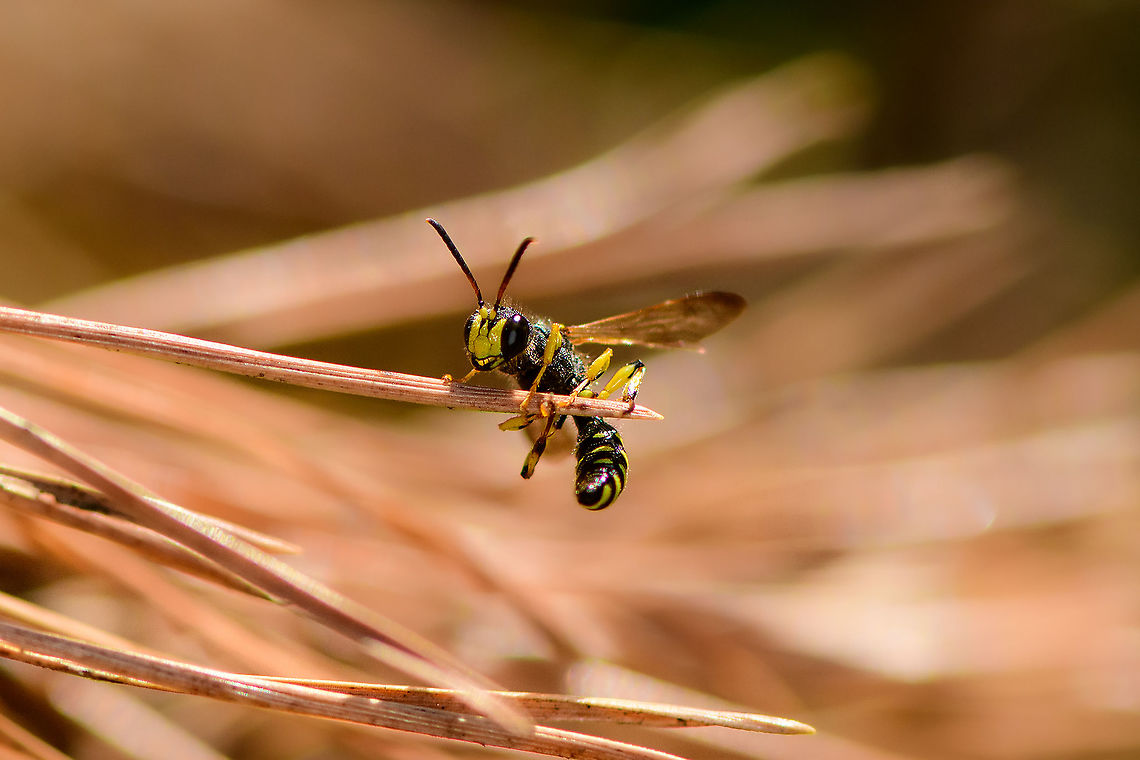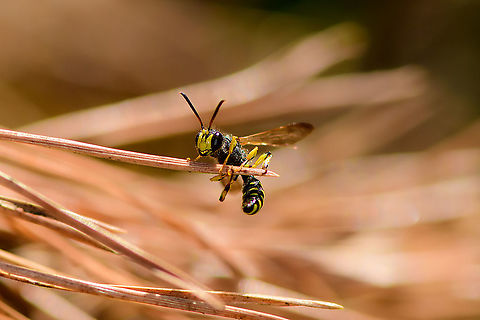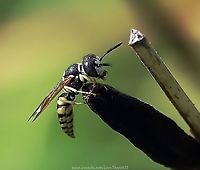 Promoted
Promoted
European Beewolf, Loonse en Drunense Duinen,Netherlands
Thankfully, the other day Philip Booker posted this...
...which neatly pre-identified this huge headed wasp that I saw late June. Some facts we've collected thus far:
- it strikes bees from above, almost instantly paralyzing them
- it sometimes turns them on their back, push on their stomach, and feed on the nectar ejected
- it carries the bee to the nest, for the larvae to feed on whilst still alive
- it applies antibiotics to its cocoons, based on a symbiotic relationship with particular bacteria
And to add, a fun little nostalgia video (dutch):
First interesting thing is how powerful of a digger it is. Almost like a dog.
Yet the main point of the video is to try and understand how the wasp navigates to her nest.
First, the nest entrance is covered in sand, yet she immediately finds the entrance anyway. How?
Second, new objects are placed around the nest, which she seems to notice when exiting the nest, as if memorizing them.
Third, whilst she is away, the objects are displaced, and a fake entrance is made.
She falls for it, which proves she uses beacons, the relative position of other objects, to find the nest. Which is of course common sense, but still remarkable how much tiny creatures can compute.
Another display of strength, digging *whilst* carrying a bee:

"Philanthus triangulum", commonly known as the European beewolf or the bee-eating philanthus, is a solitary wasp that lives in Europe and Northern Africa.


comments (7)
Or maybe with introduction you mean, introducing by explaining? Posted 5 years ago, modified 5 years ago